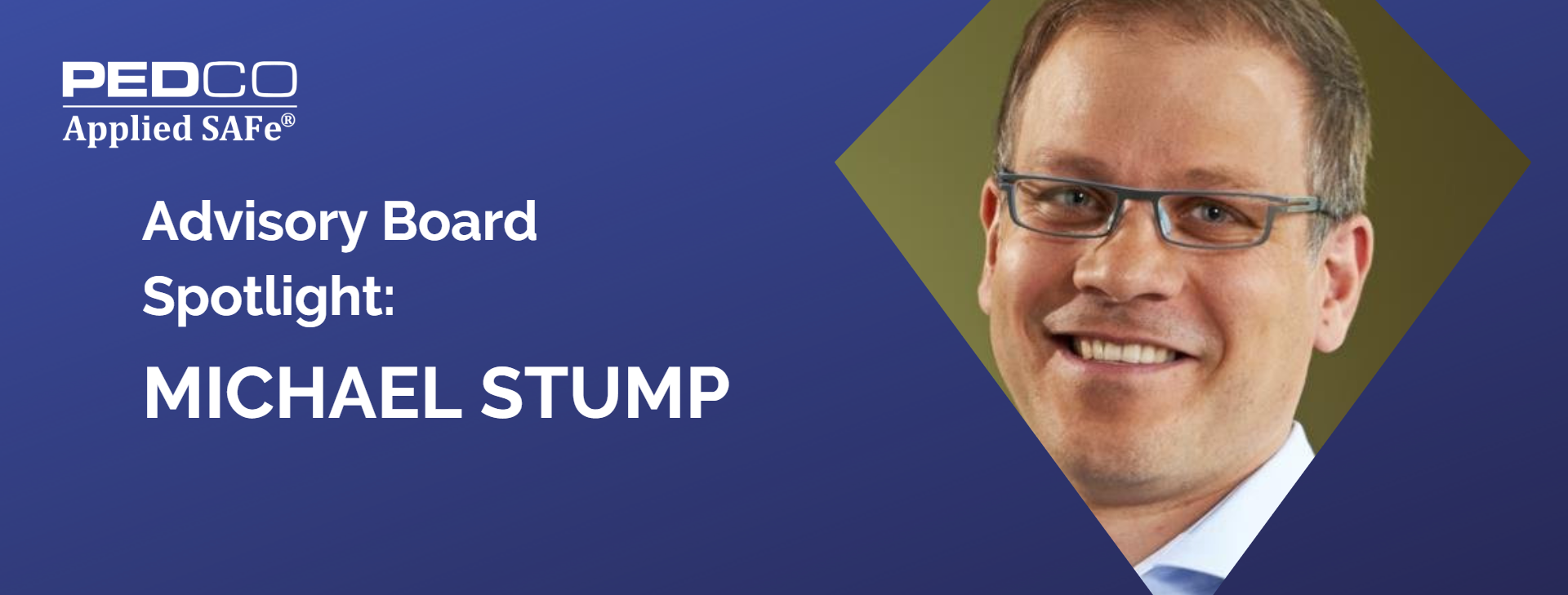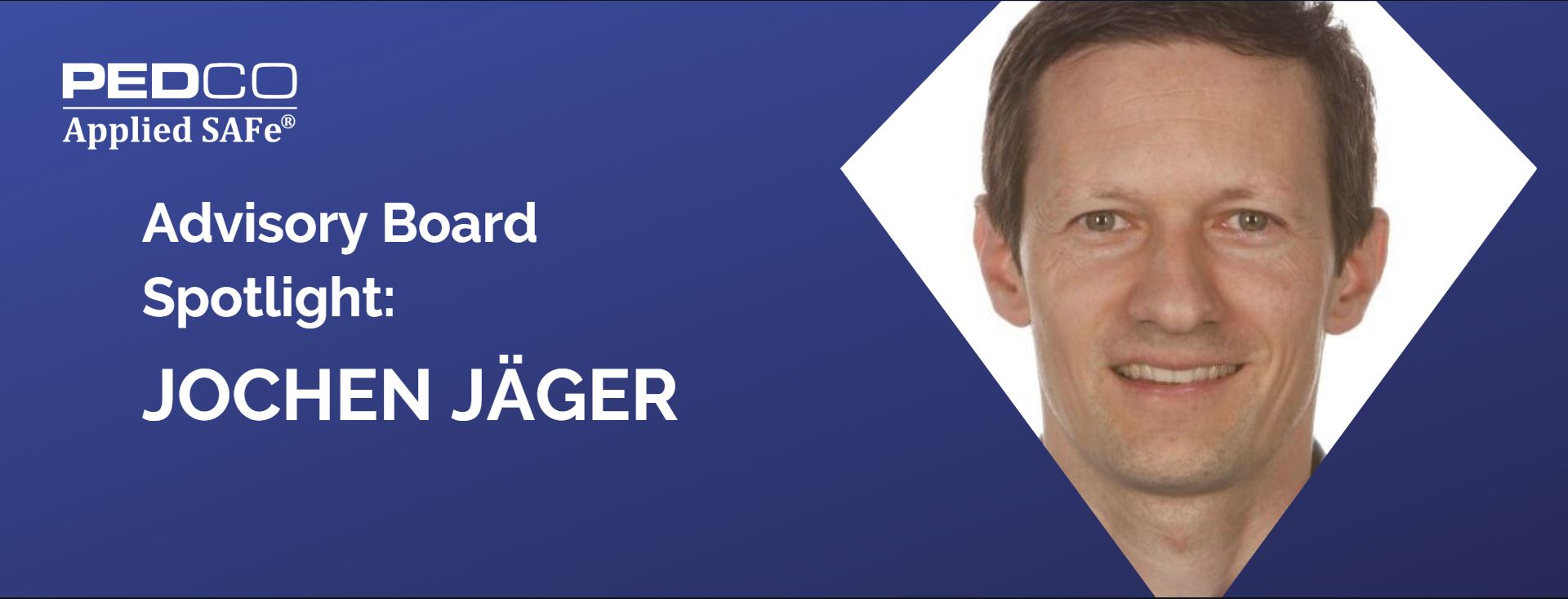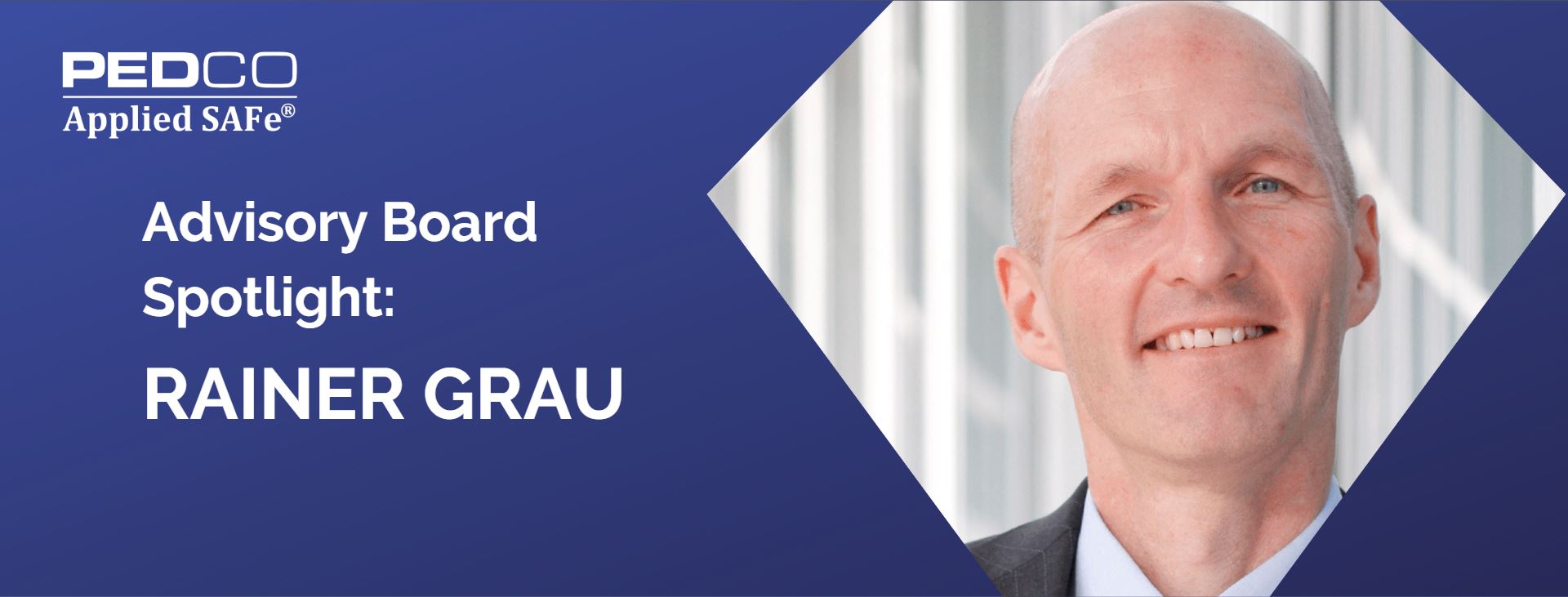Every month PEDCO will highlight a member of our Advisory Board through a Q&A session we have done with them. This month we spoke with Michael Stump, SAFe Fellow and SAFe Program Consultant Trainer (SPCT).
He is a Lean-Agile Leader and mentor to executives on state-of-the-art SAFe practices in and beyond the software industry. His consulting and management experience enables him to lead, manage, and advise companies through great organizational change. As an advisory board member to technology companies, his specialty is Lean and Agile transitions within highly distributed, multi-cultural enterprises.
Mr. Stump has been involved for many years in the development of Applied SAFe® in his role as product owner for the SAFe-Part of our implementation of the Scaled Agile Framework® (SAFe®).
Read our conversation with Michael Stump:
What was your “ah-ha moment” with Agility?
Like many others, I’ve used Agile principles and practices for a long time without knowing it and of course in combination with traditional thinking that I’ve been taught at University and early employers. I’ve realized that successful initiatives were often based on very strong and experienced Project Managers with a customer-centric mindset on both Supplier AND Customer side. Unfortunately, this caliber of Project Managers is rare. More often I’ve seen projects with delays, cost-overruns, overworked Project Managers and teams or individuals that are not engaged and lack accountability.
When I learned about the Agile Manifesto and Scrum I wanted to experiment and see the impact for myself. It was absolutely amazing to see the change and the results and especially how fast it can happen. For me, Agile was and is a means to get better and faster results but not the goal to be Agile. We want to achieve certain goals and Agile or SAFe are very powerful tools that help us to achieve those results.
The major “ah-ha” moment was with a team in Management Consulting. This was in the very early stages of “official” Agile and had nothing to do with Software and IT. With the right coaching and mentoring, this team of Management Consultants delivered amazing results in a very short time. In the second month, the same team delivered 3.5 times more Business Value (measured in billable hours)! I’ve learned how a diverse team can get into a state of flow and do amazing things with learning and growing as a team while delivering great results and having a lot of fun.
What excites you most about Applied SAFe?
I supported an organization in a regulated environment. One of the things we had to do was to describe how we are working, to demonstrate where and how we are compliant to external regulated requirements, which were key to the success of the business. Doing this is also a risk reduction, especially when you look at the cost or potential costs. In addition, we wanted to make sure that teams and teams of teams can share their learnings and good practices with other teams across the globe. The effort to create this initial description was massive and what everybody underestimated was the effort to maintain it and make sure that everybody can benefit from the learning.
Applied SAFe takes a lot of this pressure away. It is always up to date with the latest proven practices and that saves a lot of time and effort and helps everybody to focus more on the value delivery for customers. Besides the ability that I can share my learnings and good practices with other teams and the whole organization, the Compliance report is one of my favorite things. Not only can I easily show our processes internally and to auditors but to the Customers. I can show them how we are working, how we are compliant, and how we use this in a dynamic setting to learn and improve.
There is a second element that I see providing a lot of value and that’s the “Tailoring”. There are a lot of practices and often teams and organizations make it way more complex than necessary. The Tailoring Engine is a guide to help select the practices for a starting point and then give you the ability to inspect and adapt from there. Start small and expand. It is always easy to add complexity, but it is very hard to reduce complexity, so I always try to start as simple as possible and add more if there is a need for it. Applied SAFe supports this in a great way.
How has learning about business agility shaped your career?
Obviously, it impacted my career a lot. Coming from a more control and command approach it was a big transition in leadership style for me. And believe me, it was certainly not easy! Continuous learning and improvement, helped me to lead in line with Lean-Agile Principles. It’s amazing to see how even small changes impacted other people and the whole organization. Building the right “environment”, removing impediments and helping people to continuously learn and grow in a positive way result in great progress. While this change was really difficult and hard, it helped me to better understand the concerns and fears of executives and leaders and advise them during this time of fast change.
In your opinion, are the companies that come to you seeking change and innovation the ones in most need of such initiatives? Or is it more of a cycle of the already self-aware companies seeking to further improve?
You are right, unfortunately, often it is not the companies and leaders that need change the most, who seek guidance. For some of those organizations, it will be too late, and they risk going out of business in a couple of years. Today is the day where change is at its slowest, it will just speed up from here and organizations and leaders need to appreciate that fact and make the necessary changes. Building a learning organization is absolutely key. There is a trend that says “Scaling Efficiency Gives Way to Scaling Learning” and I do absolutely support that and believe only companies that understand this right balance will be successful in future.
What motivates you?
I have always had the pleasure of supporting individuals and organizations on their transformation journey. Inspiring and seeing the journey people go through and how this way of thinking becomes the “new normal” and the impact this has, is fantastic, very rewarding, and motivating to me. Meeting people again after a couple of years and hearing their stories and how I inspired them and changed their lives still gives me goosebumps.
How do you see the future of SAFe and Applied SAFe?
One of the things I always appreciated about SAFe is, that it is not developed in a dark room. It is co-developed with customers, and the community, and it’s constantly improved. Customer centricity is key and that’s why I believe SAFe has and will help organizations to achieve results in a business agility context. Remember, it is not about becoming Agile or doing SAFe, it’s about what you can achieve. It’s about uncovering better ways of doing things, building a culture of learning and the ability to lead through complexity, ambiguity and innovation. I believe that “Applied SAFe” will be instrumental for organizations in regulated environments with compliance requirements. It builds trust and becomes a microlearning platform for good practices. SAFe often describes one way but Applied SAFe can be used to upload a series of own, proven, successful practices and share it with the whole organization. It can be consumed in a microlearning approach and used to grow and deliver better results.



